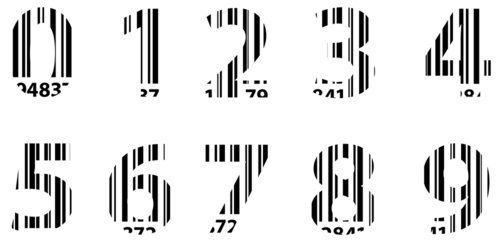When it comes to tracking inventory and assets across the supply chain hierarchy, barcode labels are the most functional tools. However, analyzing and putting the barcode information to use can get complicated if the industries aren’t well versed with the types and existing standard-issuing entities. While a host of barcode types exist, a specific industry needs to concentrate on select versions for labeling the physical inventory and establishing industry-wide consistencies. Moreover, barcode labels also make it easier for the organizations to transfer data across multiple channels.
Types of Barcodes
Myriad barcode types can be further grouped into three categories:
- Numeric-Only
These are typical one-dimensional barcodes that comprise only of numbers and represent data in the form of varying spaces and width of the parallel lines. These entities are further segregated into UPC and EAN codes. The former makes use of 12-digit codes; carrying the identity and identification number of the manufacturer. The EAN codes, on other hand, are quite similar to the UPC barcodes and support POS scanning. However, they have a 13-digit format and multiple variations like EAN-13, JAN-13, EAN-8, ISSN and ISBN.
Apart from that, there are Interleaved and Industrial 2 of 5 codes followed by Standard 2 of 5, Codabar, Code II and POSTNET codes.
- Alpha-Numeric
Alpha-Numeric barcodes are also one-dimensional entities that are created using a strategic combination of alphabetic characters and numbers. When it comes to detailed segregation, there are Plessy codes followed by Code 39, Code 93, Code 128 and LOGMARS. The Plessy codes are primarily used for retail groceries and shelf marking while the defense industries and automotive organizations use the Code 39 barcodes. A compacter version of the Code 39 is Code 93 where the barcodes use only 9 elements per character as compared to 15. Code 128 barcodes can be used for similar industries but they boast of a broader character set and better density.
Lastly, we have LOGMARS codes which stand for Logistics Applications of Automated Marking and Reading and are typically used by the Defense applications.
- Two-Dimensional
These barcodes have a definite shape, including the likes of a rectangle or square and also come with a unique arrangement of small dots. The best thing about using 2D barcodes is that they can hold a lot of informative data within smaller spaces. They can also be etched or printed on smaller areas. Typical examples of the same include QR codes or Quick Response codes, Data Matrix, Aztec and PDF417.
The QR codes are present virtually on everything that can be retailed, including the likes of books, beverage cups and what not. The Data matrix barcodes are used for document management, postal services, logistics and healthcare applications. PDF417 makes its presence felt in transport, identification cards and inventory management. Lastly, 2D Aztec codes are best suited for boarding passes, tickets and literally anything that concerns the transportation industry. These codes, however, take minimal space and store a lot of important information.
Barcode Standards
While there is already an expansive collection of barcode types and applications, companies are constantly generating new ones for being proactive with the labeling ideas. However, with the inventory and supply chain requirements escalating with each passing day, consistency is required to streamline the information flow by issuing certain standards. This brings us to the important concept of barcode standardization, precisely by the governing bodies and varied industry regulators.
- AIM Global— Better termed as the Association for Automatic Identification and Mobility, this is an authoritative body concerning automatic identification, networking and data collection. Myriad AIM standards gradually transform into ISO standards.
- ANSI— The voice of Conformity Assessment, ANSI focuses on global economy, environment protection and customer safety.
- AIAG— Automotive Industry Action Group or AIAG lays down industry-wide standards and brings together volunteers for achieving a common consensus.
- Defense Logistics Agency— This body defines standards for parts, supplies, procurement of materials and other activities pertaining to the DoD logistics system.
- EPA— Environmental Protection Agency aims at issuing standards and practices related to air and water compliance.
- FHWA— This barcode standard oversees highways signs and varied traffic regulations.
- FASB— Financial Accounting Standards Board concerns laying down standards for private and public companies.
- GASB— Government Accounting Standards Board aims at improving reporting standards and financial accounting for local and state governments.
- GS1— This standard aims at data capture, sharing and improved global collaboration.
- HIBCC— Here is a barcode standard that’s specific to the healthcare industry.
- ISO— International Organization for Standardization is probably the largest developer when it comes to the voluntary standards. This organization has already developed more than 21,000 standards, pertaining to business and technology.
- IWLA— This association develops standards for the logistics and warehousing industry.
- JAPIA— Here is an association that defines barcode standards for improving production, research and information related to auto parts.
While these are some of existing barcode standards, there are a few more that have specific roles when it comes to handling the labeling requirements of supply chain professionals and fixed asset professionals. It is therefore important to understand the role of barcodes in asset tracking and inventory management. With stricter industry regulations coming up, it is important for the industries to comply with the existing barcode standards. Moreover, these barcodes can positively impact the growth of a business by contributing towards its long-term success, in the form of monitoring and reporting compliance.

